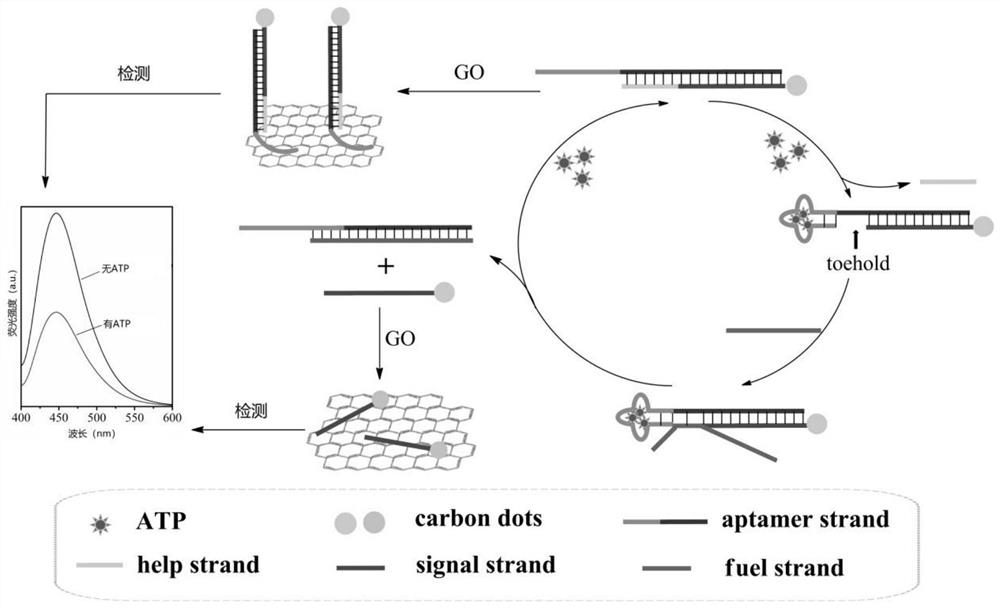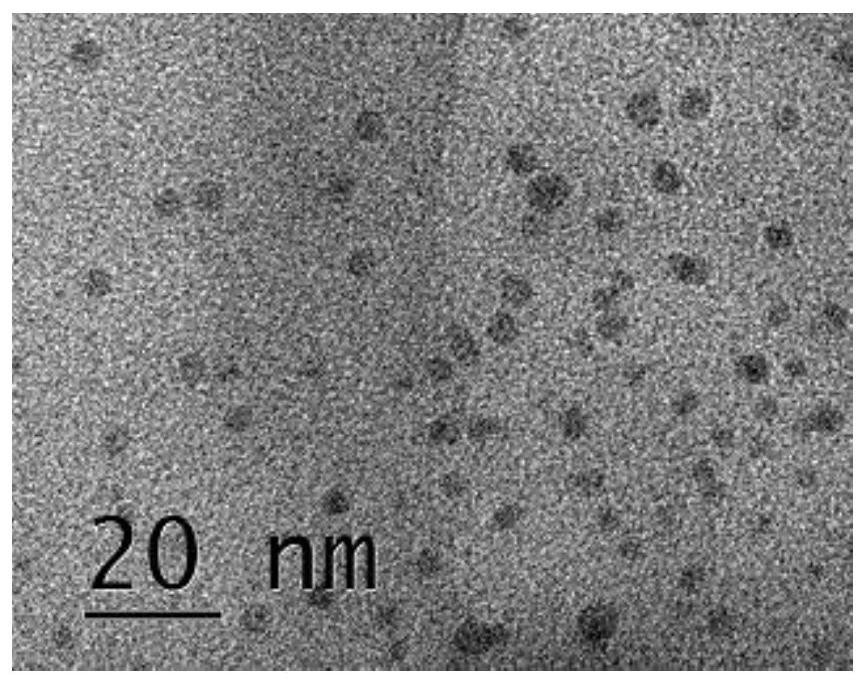A method and kit for the detection of adenosine triphosphate by a strand displacement signal amplification fluorescent sensor based on aptamers and carbon dots
A fluorescent sensor and adenosine triphosphate technology, applied in the field of analysis and detection, can solve the problems of complex operation, background signal interference, tedious and time-consuming, etc., and achieve the effect of simple experimental conditions, high selectivity detection, and improved sensitivity
- Summary
- Abstract
- Description
- Claims
- Application Information
AI Technical Summary
Problems solved by technology
Method used
Image
Examples
Embodiment 1
[0050] a) Construct a fluorescent aptamer sensor: 2 μL aptamer strand (10 μM), 2 μL help strand (10 μM) and 20 μL CDs-signal strand (1 μM) were mixed evenly, and incubated at 37°C for 60 min; the above strands were pre-dissolved in 20 mM Tris -HCl;
[0051] b) Target circulating signal amplification: add 2 μL of 10 μM fuel strand and target ATP to the system, and react at room temperature for 110 min; fuel strand is pre-dissolved in 20 mM Tris-HCl;
[0052] c) Fluorescent detection of ATP: add graphene oxide to make the concentration 50 μg mL -1 , react at room temperature for 20 minutes, centrifuge, and put into a quartz cuvette for fluorescence detection;
[0053] d) Drawing of the standard curve: According to the above method, add different concentrations of ATP solutions to the system, the concentration is in the range of 0-800nM, incubate at room temperature, measure the respective fluorescence intensity values F, and measure the blank fluorescence value F0 at the same...
PUM
 Login to view more
Login to view more Abstract
Description
Claims
Application Information
 Login to view more
Login to view more - R&D Engineer
- R&D Manager
- IP Professional
- Industry Leading Data Capabilities
- Powerful AI technology
- Patent DNA Extraction
Browse by: Latest US Patents, China's latest patents, Technical Efficacy Thesaurus, Application Domain, Technology Topic.
© 2024 PatSnap. All rights reserved.Legal|Privacy policy|Modern Slavery Act Transparency Statement|Sitemap



